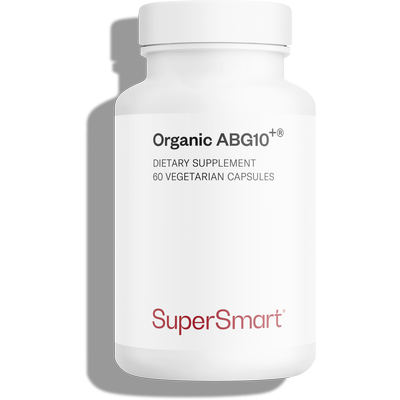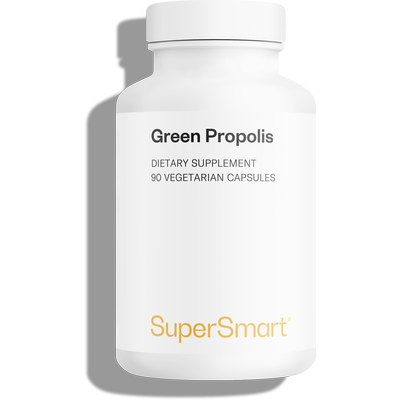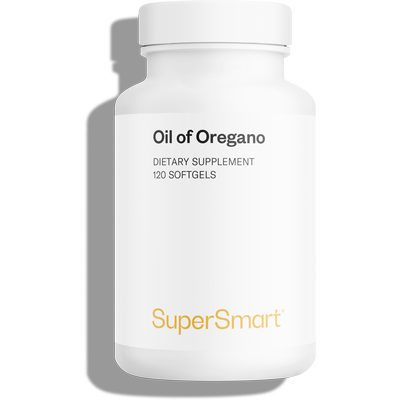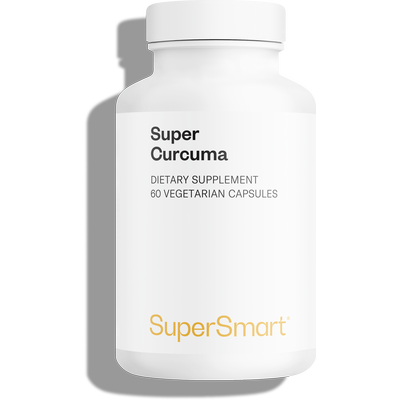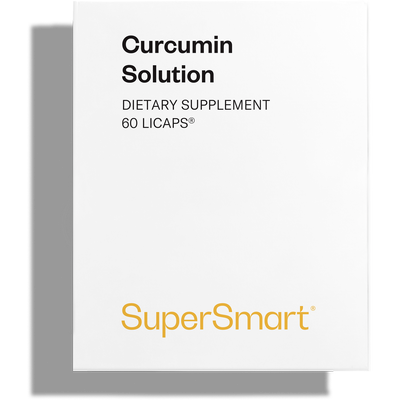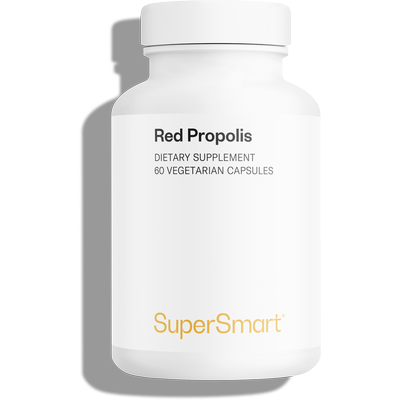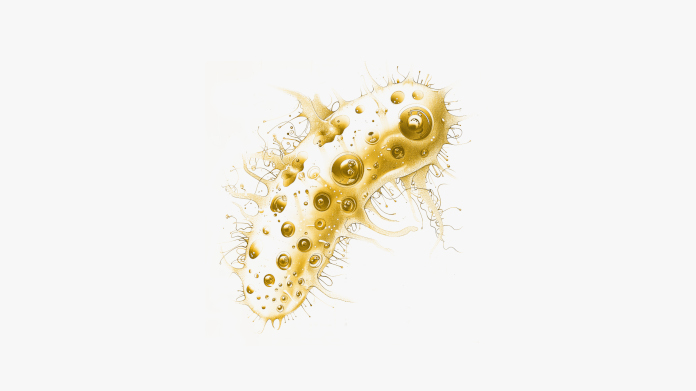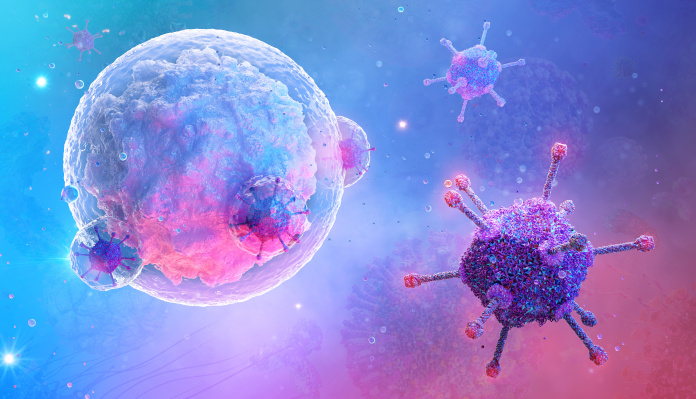
Reminder: What are antibiotics?
Derived from the Greek words anti ('against') and biôtikos ('related to life'), an antibiotic is a natural or synthetic substance that specifically attacks bacteria (1).
More specifically, a distinction is made between bactericidal agents, which are capable of killing bacteria, and bacteriostatic agents, which merely restrict their proliferation.
Broad-spectrum antibiotics act on a vast array of bacteria, while narrow-spectrum antibiotics target only certain specific types. However, both are ineffective against viruses.
Before the advent of synthetic drugs, pharmacopoeias the world over had unknowingly used natural antibiotics, developing plant-based remedies to contain certain bacterial infections.
Later, researchers isolated bactericidal compounds produced spontaneously by micro-organisms, including the famous penicillins released by yeasts of the genus Penicillium (2).
While there is no question of denying their effectiveness, natural antibiotics cannot always replace synthetic antibiotics, particularly in the case of severe infections.
5 powerful natural antibiotics
Garlic: a powerful antibacterial agent
A member of the Alliaceae family, which also includes the onion, garlic (Allium sativum) is apparently as powerful in supporting the body as it is on the palate: it boosts the immune system thanks to its dual antibacterial and antioxidant action.
Its allicin is said to inhibit the growth of a wide range of Gram-positive and Gram-negative bacteria.
Studies have also highlighted its ability to enhance the efficacy of conventional antibiotic treatments, especially in the context of increasing antibiotic resistance (3).
While garlic appears to be an excellent antibacterial agent, maturing it into black garlic enhances its antioxidant (involved in protecting immune cells) and anti-cholesterol properties by increasing its S-allyl cysteine content (a form used in Organic ABG10+® Black Garlic, which has a record S-allyl cysteine content) (4).
Oregano essential oil: an unfailing support for natural defences
A famous Mediterranean herb, oregano (Origanum vulgare) helps maintain a healthy immune system and upper respiratory tract (5).
Aromatherapists traditionally recommend its invigorating and immunostimulating essential oil to help with bacterial or viral infections.
Studies show that many food-borne bacterial pathogens are more sensitive to it, probably due to its concentration of phenolic oxygenated monoterpenes (including thymol and carvacrol) (6).
Oregano essential oil is very potent and is not recommended for pregnant or breast-feeding women, children or those with impaired liver function.
Other people should take oral supplements at the correct dosage (either as a single supplement with Oil of Oregano, standardised to 40% carvacrol, or in combination with peppermint, eucalyptus and Ceylon cinnamon in the Organic Defense Mix synergy) (7).
Neem: a digestive and skin protector
Neem (Azadirachta indica), also known as margosa or Indian lilac, has been cultivated in India for thousands of years.
Considered the ‘wonder tree’ by farmers, who praise its insecticidal, antifungal and fertilising properties, it has also made a name for itself in Ayurvedic medicine.
With 130 biologically active compounds, it supports the body's natural defences against microbes, particularly in the skin and digestive tract, where it has a purifying, antiseptic and detoxifying action (8).
Its leaves have also been used in cosmetics formulations for acne-prone skin (also found in capsule form in Neem Extract) (9).
Propolis: a natural antiseptic from the hive
Do you know how bees protect their hives? They do it by making propolis.
This clever mixture of plant resins, wax and saliva, used to coat their hives, not only strengthens and seals them but also protects them against microbial and fungal invasions.
The composition of propolis varies according to its region of origin.
The rarest forms are also those of the greatest therapeutic interest.
While European bees gather propolis from poplar trees, Brazilian bees primarily collect chlorophyll from the buds of the Baccharis dradunculifolia species.
They then produce a green propolis rich in cinnamic acid and artepillin C, which is thought to have immunomodulatory activity (which is why Green Propolis is standardised in phenolic acids and artepillin C, offering unequalled effectiveness) (10-11).
More powerful, but even rarer, red propolis also comes from Brazil. This time made from the legume Dalbergia ecastaphyllum, it contains over 300 exceptional nutrients that work in unison to repel aggressors.
It combines isoflavonoids such as formononetin, biochanin A and daidzein, as well as esters of caffeic acid (Red Propolis, harvested in the heart of the Brazilian mangroves, takes advantage of its unprecedented strength in a premium-quality formulation) (12).
Turmeric: a remarkable immune mediator
A key medicinal plant in Ayurveda, turmeric (Curcuma longa) helps to boost immunity.
Its most active curcuminoid, curcumin, is described in the scientific literature as a powerful antimicrobial agent, capable of cooperating with various immune cells (macrophages, B and T lymphocytes, killer cells, etc.) and inhibiting certain inflammatory responses (13).
Unfortunately, curcumin is poorly absorbed by the body (14).
Some dietary supplements get round this problem by combining curcumin with complex lipids which increase its absorption (as in our patented Super Curcuma extract) or by micronising it to make it more soluble in the intestine (185 times more absorbable than traditional curcumin, Curcumin Solution is currently the most bioavailable form of curcumin on the market) (15).
SUPERSMART ADVICE
References
- Patel P, Wermuth HR, Calhoun C, et al. Antibiotics. [Updated 2023 May 26]. In: StatPearls [Internet]. Treasure Island (FL): StatPearls Publishing; 2024 Jan-. Available from: https://www.ncbi.nlm.nih.gov/sites/books/NBK535443/
- Yip DW, Gerriets V. Penicillin. [Updated 2024 Feb 20]. In: StatPearls [Internet]. Treasure Island (FL): StatPearls Publishing; 2024 Jan-. Available from: https://www.ncbi.nlm.nih.gov/books/NBK554560/
- Magryś A, Olender A, Tchórzewska D. Antibacterial properties of Allium sativum L. against the most emerging multidrug-resistant bacteria and its synergy with antibiotics. Arch Microbiol. 2021 Jul;203(5):2257-2268. doi: 10.1007/s00203-021-02248-z. Epub 2021 Feb 27. PMID: 33638666; PMCID: PMC8205873.
- Ahmed T, Wang CK. Black Garlic and Its Bioactive Compounds on Human Health Diseases: A Review. 2021 Aug 19;26(16):5028. doi: 10.3390/molecules26165028. PMID: 34443625; PMCID: PMC8401630.
- Veenstra JP, Johnson JJ. Oregano (Origanum vulgare) extract for food preservation and improvement in gastrointestinal health. Int J Nutr. 2019;3(4):43-52. doi: 10.14302/issn.2379-7835.ijn-19-2703. Epub 2019 Apr 9. PMID: 31080888; PMCID: PMC6508890.
- Simirgiotis MJ, Burton D, Parra F, López J, Muñoz P, Escobar H, Parra C. Antioxidant and Antibacterial Capacities of Origanum vulgare L. Essential Oil from the Arid Andean Region of Chile and its Chemical Characterization by GC-MS. 2020 Oct 16;10(10):414. doi: 10.3390/metabo10100414. PMID: 33081116; PMCID: PMC7602849.
- Ben Selma W, Ferjeni S, Farouk A, Marzouk M, Boukadida J. Antimicrobial activity of Cinnamomum zeylanicum essential oil against colistin-resistant gram-negative bacteria. Int J Environ Health Res. 2024 May 2:1-13. doi: 10.1080/09603123.2024.2348094. Epub ahead of print. PMID: 38695857.
- Ofusori DA, Falana BA, Ofusori AE, Caxton-Martins EA. Regenerative Potential of Aqueous Extract of Neem Azadirachta indica on the Stomach and Ileum Following Ethanol-induced Mucosa Lesion in Adult Wistar Rats. Gastroenterology Res. 2010 Apr;3(2):86-90. doi: 10.4021/gr2010.04.173w. Epub 2010 Mar 20. PMID: 27956991; PMCID: PMC5139875.
- Kola-Mustapha AT, Raji MA, Adedeji O, Ambrose GO. Network Pharmacology and Molecular Modeling to Elucidate the Potential Mechanism of Neem Oil against Acne vulgaris. 2023 Mar 21;28(6):2849. doi: 10.3390/molecules28062849. PMID: 36985821; PMCID: PMC10056471.
- Lupatini NR, Danopoulos P, Swikidisa R, Alves PV. Evaluation of the Antibacterial Activity of Green Propolis Extract and Meadowsweet Extract Against Staphylococcus aureus Bacteria: Importance in Would Care Compounding Preparations. Int J Pharm Compd. 2016 Jul-Aug;20(4):333-337. PMID: 28333678.
- Shahinozzaman M, Basak B, Emran R, Rozario P, Obanda DN. Artepillin C: A comprehensive review of its chemistry, bioavailability, and pharmacological properties. 2020 Nov;147:104775. doi: 10.1016/j.fitote.2020.104775. Epub 2020 Nov 3. PMID: 33152464.
- Daugsch A, Moraes CS, Fort P, Park YK. Brazilian red propolis--chemical composition and botanical origin. Evid Based Complement Alternat Med. 2008 Dec;5(4):435-41. doi: 10.1093/ecam/nem057. Epub 2007 Jul 7. PMID: 18955226; PMCID: PMC2586321.
- Allegra A, Mirabile G, Ettari R, Pioggia G, Gangemi S. The Impact of Curcumin on Immune Response: An Immunomodulatory Strategy to Treat Sepsis. Int J Mol Sci. 2022 Nov 25;23(23):14710. doi: 10.3390/ijms232314710. PMID: 36499036; PMCID: PMC9738113.
- Dei Cas M, Ghidoni R. Dietary Curcumin: Correlation between Bioavailability and Health Potential. 2019 Sep 8;11(9):2147. doi: 10.3390/nu11092147. PMID: 31500361; PMCID: PMC6770259.
- Schiborr C, Kocher A, Behnam D, Jandasek J, Toelstede S, Frank J. The oral bioavailability of curcumin from micronized powder and liquid micelles is significantly increased in healthy humans and differs between sexes. Mol Nutr Food Res. 2014 Mar;58(3):516-27. doi: 10.1002/mnfr.201300724. Epub 2014 Jan 9. Erratum in: Mol Nutr Food Res. 2014 Mar;58(3):647. Dosage error in article text. PMID: 24402825.
8 Hours
Excellent quality products with…
Excellent quality products with innovative formulas, as someone who has been suffering with acid reflux, these supplements have been lifesavers.
Oriana Moniz
11 Hours
high quality supplement!
high quality supplement!
GALANT
1 Days
Good service prompt delivery
Good service prompt delivery
Mrs Marcella Reeves
6 Days
I like your clear explanation
I like your clear explanation. And how to make a choice of products for a specific health problem
Ingrid
12 Days
Great product and it arrives quickly.
Great product and it arrives quickly.
SOMMARIVA Gianni
13 Days
Excellent products and fast service.
Excellent products and fast service. What do we need more?
Margarida
17 Days
The variety of products is amazing
The variety of products is amazing, the offers are good and the sending is very fast. I just miss having a bit more of guidance about combinations, possible interactions, etc.
Maria Angeles Verdu
19 Days
It was quick
It was quick.
Timo Antero
21 Days
Who is a good boy? You, you are! Yes, yes
:) :(:) :(:) :(:) :(
JORGE Catalan Gasco
23 Days
Excellent online site
Excellent online site, efficient and quick delivery. A great experience.
Chris
26 Days
I’m really happy with your products, but…
I’m really happy with your products. Indeed, I’ve been a customer of SuperSmart for a long time. However, I believe that lately you’ve made a significant mistake in choosing Poste Italiane for your deliveries. Poste Italiane is now over loaded and assigns the deliveries to small local companies that have grown like mushrooms because of this business. However, the service they provide is very poor. They let you know about the delivery date just the evening before, with no time to organize yourself, many times you receive a message saying that they tried to deliver but you were not home and in reality they haven’t come at all and, when they do come, you open the door of the building ( I live on the 3rd floor) and when you get downstairs they have already left, leaving the pack inside but right behind the glass door instead of at least putting it on top or under the letterbox. This is not just a one time event but it’s their way of proceeding. It would be worth hiring a professional currier. Thanks
Olga Gladys Del Signore
27 Days
Good products
Good products, fast service
Mrs I Heinrich
33 Days
Quality products and fast shipping.
Quality products and fast shipping.
JF
35 Days
Everything is great. Keep up
Your product and service is great that's why i ordered again.
KOSMATOS Stamatios
39 Days
everything as expected
the products work and the processes to support them also
Ruggero Benedetto

